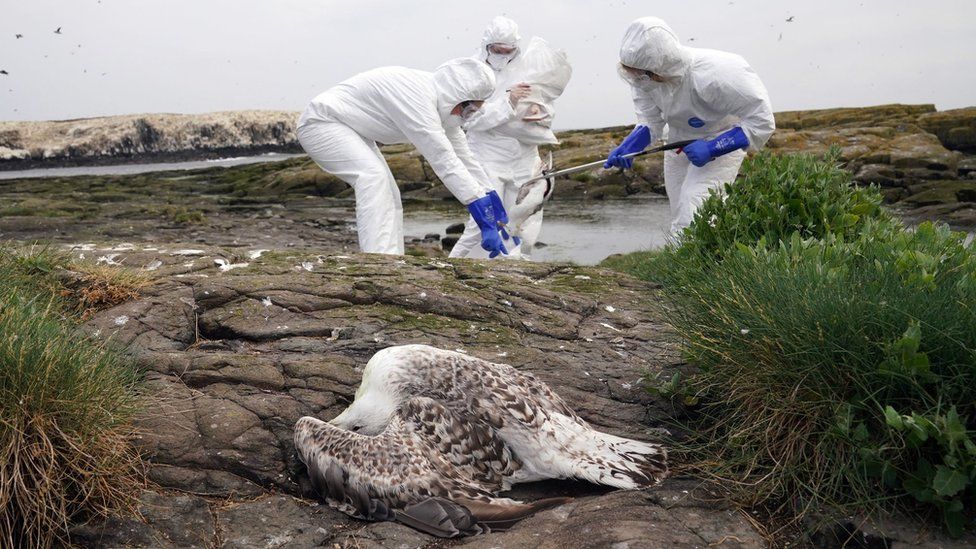

A key defence that blocks nearly all bird flu when it attempts to invade our body has been discovered by scientists.
Bird flus have been involved in four pandemics since 1918 – killing millions of people.
The research, led by the University of Glasgow, showed those pandemics and normal winter flus had evolved ways of getting round this “powerful barrier”.
 The team think we will soon be able to predict which of the flus currently in birds pose the biggest risk.
The team think we will soon be able to predict which of the flus currently in birds pose the biggest risk.
The scientists were investigating spillover events. These are the moments a person catches an infection from an animal. This jump across species is a critical step in the start of a new pandemic.
In laboratory experiments, researchers uncovered a section of our genetic code – our DNA – that becomes activated in response to an infection. It is called BTN3A3 (although even the researchers admit “we’re stuck” with a clunky name).
The data, published in the journal Nature, showed BTN3A3 became active in our nose, throat and lungs and that it reduced the ability of bird flus to replicate.
Researcher Dr Rute Maria Pinto said “nearly all” bird flus are unable to bypass this protection so “these are normally blocked by it, so they don’t jump”.
She added: “The big majority of human viruses and in fact all pandemic viruses so far, have [resistance to BTN3A3] so they overcome this block and therefore infect.”
There is a constant chance of bird flus making the jump into people. There is a variety of flu viruses in wild birds, and poultry poses a high risk because of the sheer number of farmed animals and their close proximity to people.
The 1918 flu pandemic is thought to have started in birds and is estimated to have killed 50 million people. The researchers showed a form of bird flu called H7N9 developed higher levels of resistance to BTN3A3 in 2011 and 2012 before the first human cases emerged in 2013.
Evolving ways of bypassing BTN3A3 is one of the steps a bird flu can take to successfully infect us.
The researchers’ vision is to routinely analyse – or sequence – the genetic code of flus that are currently circulating in birds, identify the dangerous ones and tackle them.

Prof Massimo Palmarini, director of the Centre for Virus Research in Glasgow, told me: “In the not so distant future we’ll be able to put together all the pieces of the puzzle.
“From a sequence of a virus, we’ll be able to say this has a 90% chance to cross over to humans, this virus has only a 10% chance.”
Then targeted measures could be introduced to help control viruses that do have a high risk of making the jump.
The world’s bird populations have been hit by the largest bird – or avian – flu outbreak ever recorded.
The virus – H5N1 – has occasionally jumped into people coming into close contact with infected animals, but it has not spread from one person to another.
Prof Palmarini said “a bit more than 50%” of virus samples from birds and “all seven” cases detected in people this year had resistance to BTN3A3.
“That is one layer of concern, the other is the virus has spread as never before,” he told me.
However, the ability to bypass BTN3A3 is only one aspect of the virus’s threat to human health.
Dr Stephen Oakeshott, the head of infections and immunity at the Medical Research Council, said: “This interesting study illustrates an important piece of the very complex puzzle underpinning viral transmission between species.
“This type of mechanistic scientific insight, coupled with genetic surveillance, can offer a window into future disease risks to inform public health planning.” — bbc.com